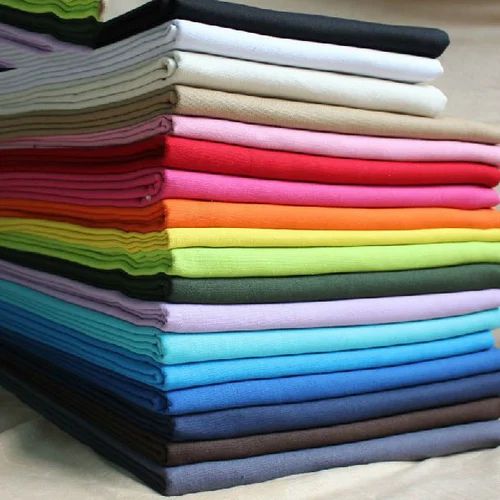Demystifying Fabric Weight: Understanding the Importance in Sewing and Textile Work
·

·
When it comes to sewing and working with textiles, understanding fabric weight is crucial. The term "fabric weight" refers to the measurement of how heavy or light a fabric is, typically expressed in ounces or grams per square yard or square meter. It plays a significant role in determining the drape, durability, and suitability of a fabric for various projects. In this blog post, we will delve into the importance of fabric weight and how it impacts your sewing and textile endeavors.
Understanding Fabric Weight:
Fabric weight is a fundamental characteristic that affects the way a fabric looks, feels, and behaves. It refers to the density of the material and is determined by the fiber content, weave, and finishing processes. Generally, fabric weight is measured by weighing a specific area of fabric, such as a square yard or square meter, to determine its weight in ounces or grams.
Significance in Sewing:
1. Drape and Movement: Fabric weight significantly influences the drape and movement of a garment. Lightweight fabrics, such as chiffon or silk, have a graceful and flowing drape, making them suitable for creating garments with a delicate and airy feel. On the other hand, heavier fabrics, like denim or canvas, possess a stiffer drape, ideal for structured garments or home decor items.
2. Comfort and Wearability: The fabric weight directly impacts the comfort and wearability of a garment. Lighter-weight fabrics are often preferred for warm weather clothing because they allow air circulation and prevent overheating. Conversely, heavier fabrics provide insulation and are suitable for colder climates or creating outerwear.
3. Structural Integrity: Fabric weight plays a crucial role in determining the structural integrity and durability of a finished item. For projects that require stability and support, such as bags or upholstery, heavier fabrics are preferred as they can withstand regular use and maintain their shape over time.
Choosing the Right Fabric Weight:
1. Project Considerations: Consider the purpose and intended use of your project. A lightweight fabric may be suitable for a flowing dress or blouse, while a heavier fabric would be better suited for a jacket or pair of jeans.
2. Fiber Content: Different fiber types have varying inherent weights. For instance, wool tends to be heavier than cotton, and synthetic fabrics may have a range of weights depending on their composition.
3. Pattern Requirements: Pay attention to the fabric weight recommended in your sewing pattern. Patterns often suggest suitable fabric weights to ensure a successful outcome and maintain the intended design.
Conclusion:
Understanding fabric weight is essential for achieving the desired outcome in your sewing and textile projects. By considering fabric weight, you can select the appropriate materials that offer the right drape, comfort, and durability for your creations. Whether you're sewing garments, home decor items, or accessories, fabric weight plays a significant role in determining the overall look and functionality of your finished piece. So, next time you embark on a sewing project, take a moment to consider the fabric weight and choose your materials accordingly.
Understanding Fabric Weight:
Fabric weight is a fundamental characteristic that affects the way a fabric looks, feels, and behaves. It refers to the density of the material and is determined by the fiber content, weave, and finishing processes. Generally, fabric weight is measured by weighing a specific area of fabric, such as a square yard or square meter, to determine its weight in ounces or grams.
Significance in Sewing:
1. Drape and Movement: Fabric weight significantly influences the drape and movement of a garment. Lightweight fabrics, such as chiffon or silk, have a graceful and flowing drape, making them suitable for creating garments with a delicate and airy feel. On the other hand, heavier fabrics, like denim or canvas, possess a stiffer drape, ideal for structured garments or home decor items.
2. Comfort and Wearability: The fabric weight directly impacts the comfort and wearability of a garment. Lighter-weight fabrics are often preferred for warm weather clothing because they allow air circulation and prevent overheating. Conversely, heavier fabrics provide insulation and are suitable for colder climates or creating outerwear.
3. Structural Integrity: Fabric weight plays a crucial role in determining the structural integrity and durability of a finished item. For projects that require stability and support, such as bags or upholstery, heavier fabrics are preferred as they can withstand regular use and maintain their shape over time.
Choosing the Right Fabric Weight:
1. Project Considerations: Consider the purpose and intended use of your project. A lightweight fabric may be suitable for a flowing dress or blouse, while a heavier fabric would be better suited for a jacket or pair of jeans.
2. Fiber Content: Different fiber types have varying inherent weights. For instance, wool tends to be heavier than cotton, and synthetic fabrics may have a range of weights depending on their composition.
3. Pattern Requirements: Pay attention to the fabric weight recommended in your sewing pattern. Patterns often suggest suitable fabric weights to ensure a successful outcome and maintain the intended design.
Conclusion:
Understanding fabric weight is essential for achieving the desired outcome in your sewing and textile projects. By considering fabric weight, you can select the appropriate materials that offer the right drape, comfort, and durability for your creations. Whether you're sewing garments, home decor items, or accessories, fabric weight plays a significant role in determining the overall look and functionality of your finished piece. So, next time you embark on a sewing project, take a moment to consider the fabric weight and choose your materials accordingly.



